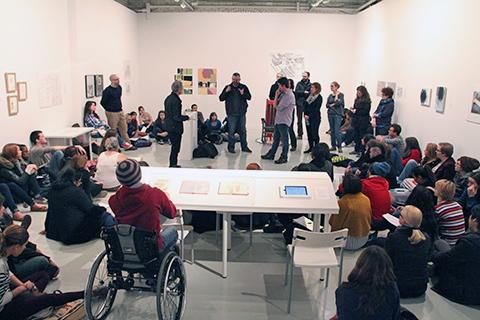Art and Design Faculty Address the ‘Persistence of Drawing’

Arcadia University Art Gallery’s 2012 Faculty Exhibition: On the Persistence of Drawing asked Art and Design faculty to explore the ways in which drawing shapes and informs their work as artists, designers and educators. On Nov. 28, several of the artists gathered to discuss the practice of drawing as well as its role in art education in the 21st century. Their perspectives are as diverse as the media they use.
Students and alumni flocked to the Gallery, eager to gain insight from their favorite professors. Richard Torchia, Art Gallery Director, hushed the room and asked attendees to take a seat on the floor to better hear and interact with the exhibition contributors. It was sitting room only.
Excerpts from the Conversation
Jess Perlitz

Carole Loeffler

Abbey Ryan

Justin Staller

Matt Borgen

Photography by Kara Wright ’14

